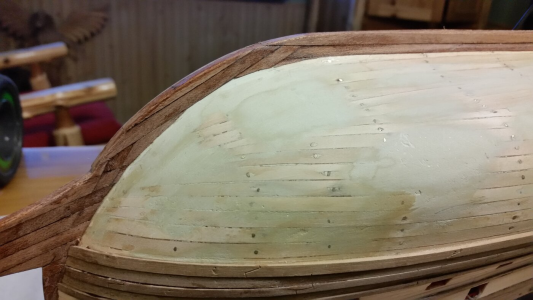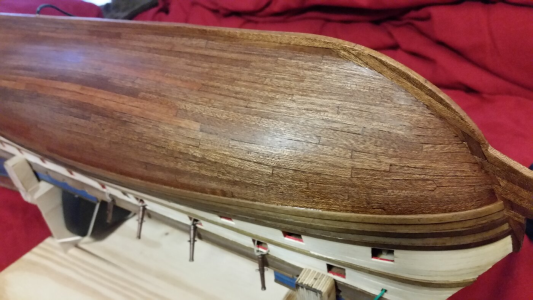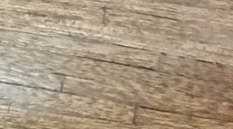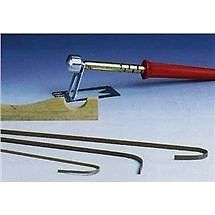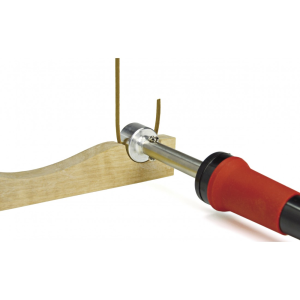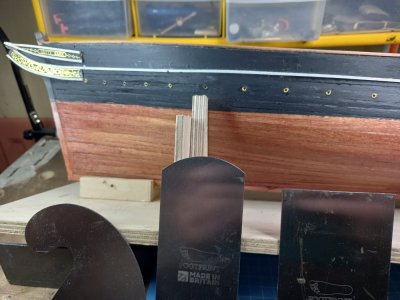I suggest that you sand using a suitable flexible batten. This is just a thin, flat stick (of wood or other material... a spring steel length of packing banding or a flat length of stiff plastic) with a piece of suitable grit abrasive sheet glued to its surface. (You can use feathering disk adhesive used for gluing abrasive sheets to rotary sander pads, if you can find it at your local auto supply store, or rubber cement thinned with a bit of acetone.) Glue a small block to each end of the top of the batten to make it easier to hold each end. The batten will conform to the general shape of the hull when you sand while gently pressing it uniformly against the curve of the hull, producing a fair finish without bumps and hollows. Start with coarser grit abrasive and work down (towards higher grit numbers) until you get a finish as smooth as a baby's bottom. Apply a base coat after the surfacing putty has filled the worst of the defects and expect to have to make two or three runs at sanding it before you get all the defects filled. There's no substitute for being OCD about the process.
Before going further, in case may be unaware,
you should not attempt to achieve a good fair surface for applying any sort of water-based coating (i.e., acrylics) to bare wood. The water in water-based coatings will be absorbed into the bare wood, which will tend to absorb more water into the soft wood between the grain, causing the wood to swell and then, when dry, shrink, leaving the harder grain standing proud. There's no point in trying to sand a piece of wood that's going to move. I've found it best to seal
all bare wood with clear ("white") shellac before applying any other coating or filler. The shellac, which is thinned with alcohol as its solvent, readily soaks into the wood and, when the alcohol evaporates, leaves behind as effective a moisture barrier as can be hoped for in any coating system and a shellacked surface is compatible with any subsequent coating one might wish to apply over it. Shellac also "hardens" softwood surfaces so that sanding doesn't "raise fuzz" on the surface of softer woods such as basswood. As for the use of water-based coatings generally, the technology has improved greatly in recent decades, but the fact remains that water-based coatings seem generally to form a more flexible film than oil-based coatings (enamels, etc.) and the more flexible films are simply a lot more difficult to sand. In its simplest example, a latex paint will form a latex film which is essentially a rubber coating. If you're old enough to have ever tried to sand a bicycle inner tube to key the adhesion of a rubber cement patch, you'll understand what I'm talking about here.
To get the worst of the imperfections, I use Interlux Surfacing Putty (
https://www.amazon.com/Interlux-Y257-PT-Surfacing-Putty/dp/B0000AY85D/ref=sr_1_1?adgrpid=1342504259915083&dib=eyJ2IjoiMSJ9.Gz17nVrpFVxKQ8P_6sDBQPPgXDSMiQW3w5iBublcDl_m_jTVkBjHLN9H2edp1EYe6h8t6UefoL6XgiogtMHS0_Vr7qm0FLq5A20SIi-lVWrTceFn1DNcvCI_bVPEdGY9._g6lfx8ktMBts3uGo5YSTAWIUkPRsvsHbeCKQJsGlqE&dib_tag=se&hvadid=83906731284955&hvbmt=be&hvdev=c&hvlocphy=88716&hvnetw=o&hvqmt=e&hvtargid=kwd-83906856471787:loc-190&hydadcr=4123_13164389&keywords=interlux+surfacing+putty&msclkid=2aecc6cbc93512a898d3a1e3959983d0&qid=1730698422&sr=8-1) which, like everything else, has gotten rather expensive, although a pint can, kept well sealed, should last for many models. The stuff is thinned with acetone. A bit added to the can every now and then and the can left upside down overnight to absorb will keep the mix at the texture of peanut butter. Apply thinly with a palette knife. The stuff sands like butter and has a very fine grain. You'll probably be able to find an equivalent product at your local auto body and fender materials supply shop for less than the Interlux marine product. (Most drywall "mud" is much too coarsely ground and absorbent for a perfect scale finish.) All fillers and surfacing putties must be primed, or they will "stand out" when a finish coating is applied due to their different absorption characteristic from the adjacent coating.
One more generic caveat for the uninitiated: If you wish to have any chance of creating a perfect finish on a model, or anything else for that matter, scrupulously ban from anywhere you may ever want to do any finishing the presence of any sort of
silicone material, particularly aerosol canned silicone spray lubricants, but also any cured silicone you may attempt to sand... heck, any of the damn stuff at all. Silicone has a very bad habit of contaminating large areas wherever it occurs. If as much as a microscopic speck of silicone material is transferred to a surface you wish to paint, that speck, which may be so small as to be invisible to the eye,
will create a "fisheye,
" a round surface defect in the finish resulting from a variation in the surface tension of the liquid coating. It's near impossible to cure this defect because sanding it out only causes the offending speck to move elsewhere, or even multiply, only to reappear when the area is coated again. Silicone "fisheyes" are so much of a problem that most commercial finishing shops, such as auto body paint shops, have strict house rules preventing the stuff anywhere on their premises.
If you are an experience brush painter using properly conditioned paint and a quality brush, you should be able to apply a perfect finish coat. In real life, there are very few of those around unless you've served an apprenticeship as a fine furniture finisher. You can also use an airbrush if you know how to use one. (They are easier to achieve a good finish than a brush in the hands of an inexperienced painter.) While I realize some do, I never use "rattle cans" for a variety of reasons, most of all because the manufacturing quality of their nozzles aren't sufficiently reliable to produce a sufficiently fine spray for scale use. Applying paint too thickly only destroys the fine detail that makes a crisply detailed model properly "snap" when viewed.
If after applying a good finish coat on a hull, there are still a few minor imperfections, such as a few specks of dust, the surface can be hand-rubbed using pumice and rottenstone. These very fine abrasive products are sold in paint stores and are used by dipping a damp soft cloth into the pumice or rottenstone powder and gently rubbing the surface to remove the offending imperfections. (Remember, here we're talking about very small imperfections. A big drip, brush stroke, or "curtain" is beyond rubbing out and, at best, must "dry" (cure) for a time until it can be sanded away and the defect repaired by further painting and sanding.) Pumice is the coarser abrasive and rottenstone the less coarse abrasive. (Or is it the other way around? It will say on the container label. Follow the manufacturer's instructions. I'm too lazy to walk out to my workshop and look on the containers I have in stock.

) Using these abrasives, a finish coat can be hand-rubbed to an amazing degree of smoothness. The coarser abrasive powder will "knock down" a glossy finish to matte, but continual rubbing with the finer powder will "raise" the gloss as high as one might wish. (This is how fine artisanal furniture finishers polish a piece of fancy custom furniture.)
A perfect scale finish takes a bit of work, although, as with all things, the more you do it, the easier it gets. Practicing on scrap wood is a wise investment of time. Never apply any coating without testing it on a scrap piece of the same material, at least until you are sure of the properties of the materials you are working with. Nothing is worse than having to remove a coating job because of some disastrous misstep like applying an incompatible coating on top of another. In this endeavor, as in most of modeling, "perfect is
never the enemy of 'good enough." "Perfect" is the essence of creating the impression of reality in miniature scale. In my experience, the number one flaw of an unconvincing model, aside from errors in scale, will be a poor paint job. (And before anybody accuses me of "rivet-counting," let me say that if you're happy aspiring to a lesser standard, by all means, follow your bliss.)




